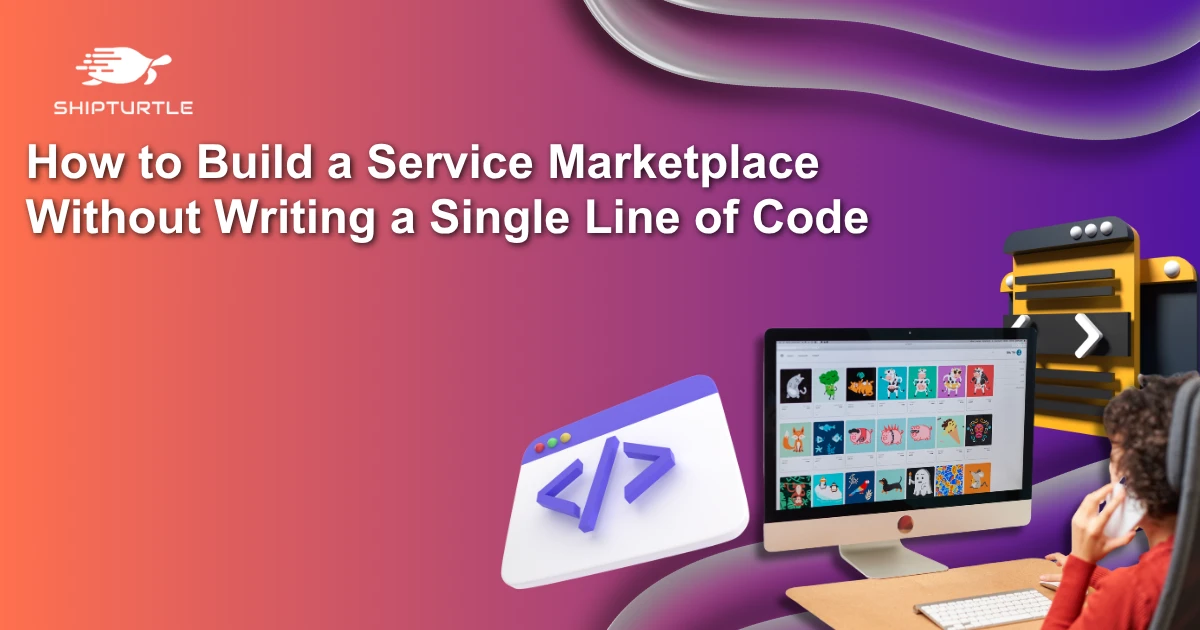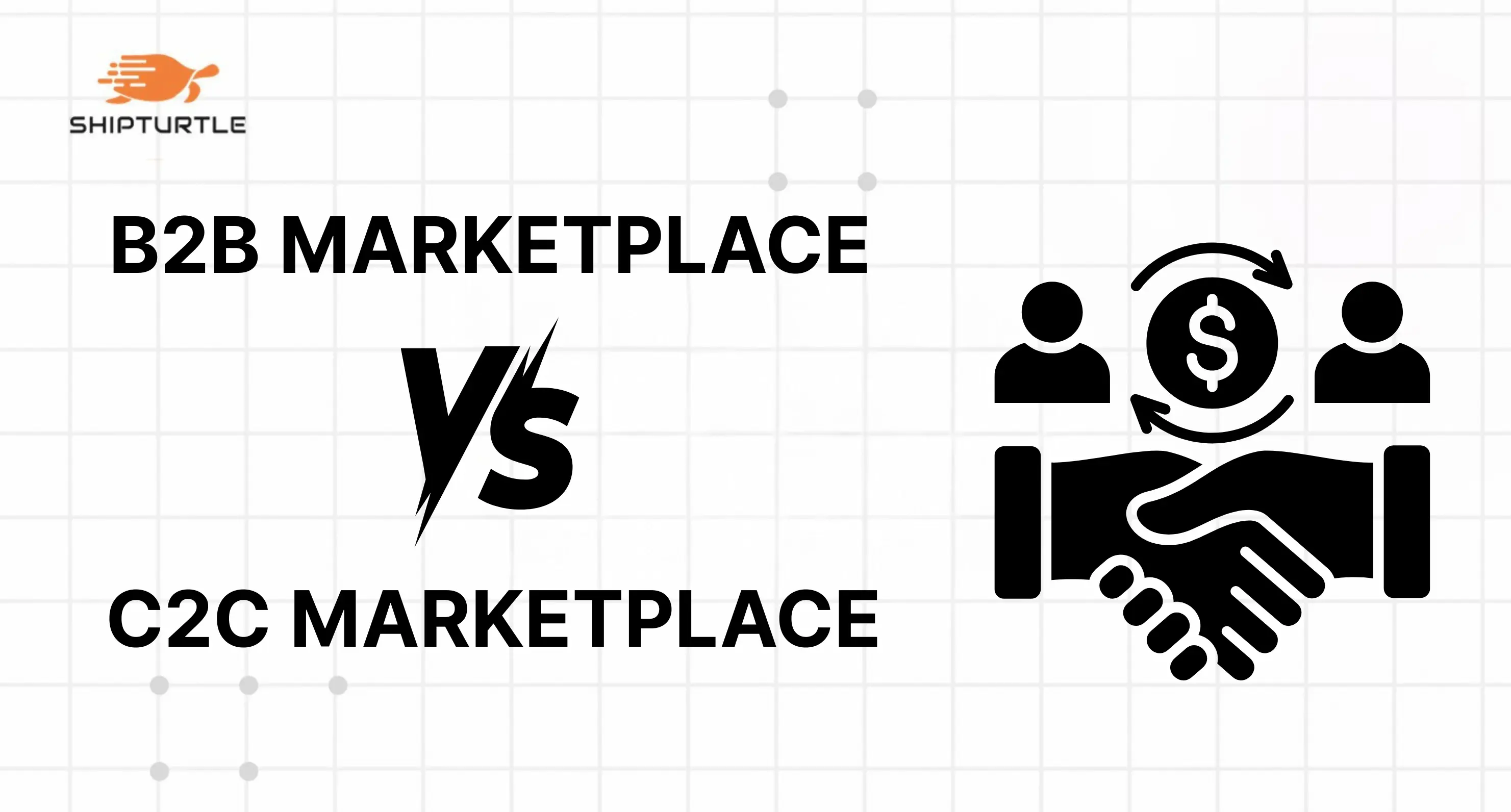
Table of Contents
Ideal for entrepreneurs, startups, and online business owners exploring the right e-commerce model for their marketplace.
But before we dive into comparisons, let’s break down what makes these two ecommerce models tick.
The core of B2B vs C2C lies in who buys, how they buy, and why.

A B2B marketplace is an online platform where businesses buy and sell products or services to other businesses. Instead of selling directly to end-users, B2B sellers—often wholesalers, distributors, or manufacturers—offer products in bulk to retailers, suppliers, or corporates.
B2B (Business-to-Business) marketplaces serve enterprises and institutional buyers. These platforms are built for scale, complexity, and compliance. Common characteristics include:
Let’s explore a few examples of successful B2B online marketplace that are reshaping industries. They are dependent on Shopify for frontend whereas Shipturtle powers backend b2b transactions to sell their products:

A digital B2B marketplace simplifying pharmaceutical procurement across Africa. It connects distributors, clinics, and suppliers with real-time availability, pricing, and logistics solutions.
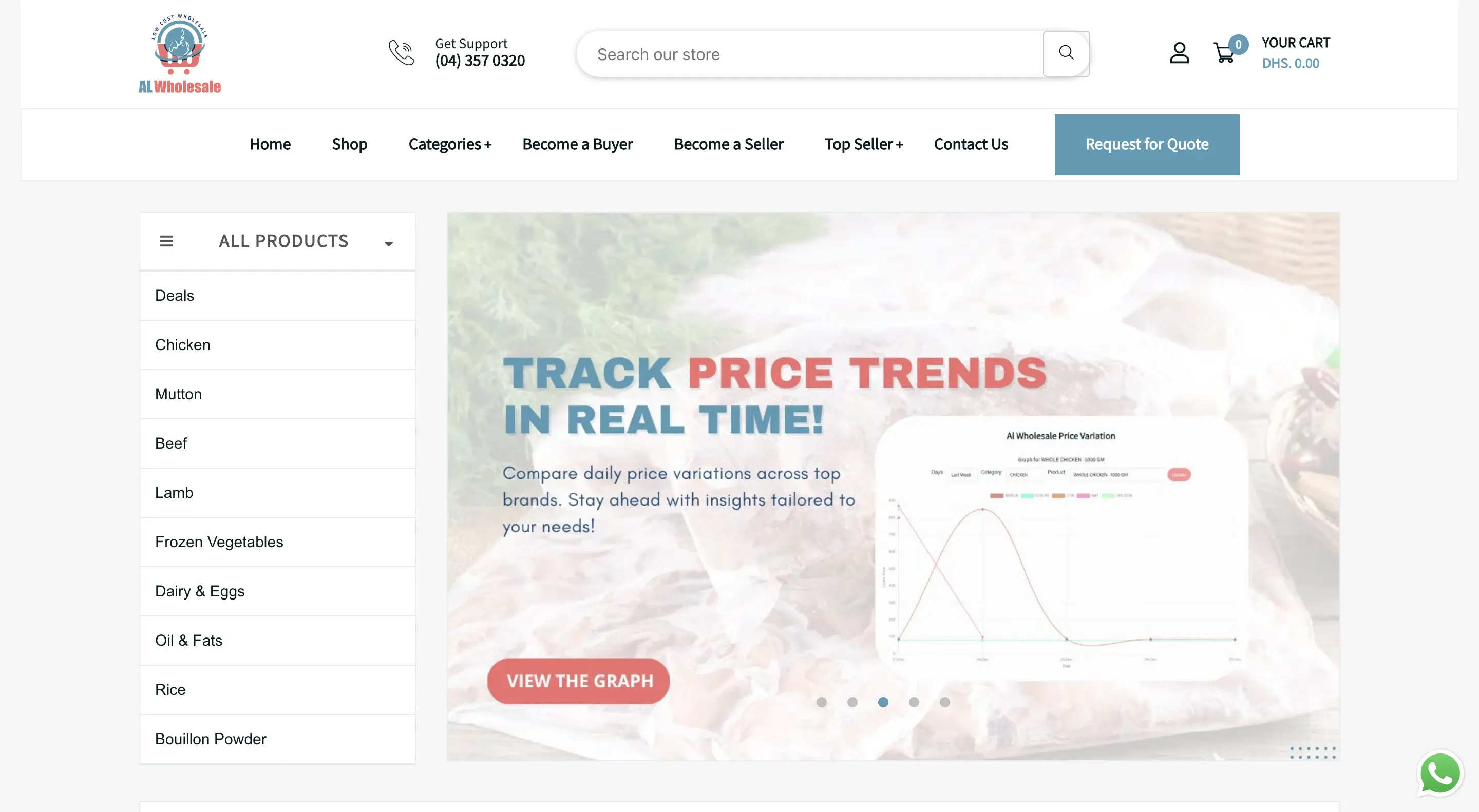
Based in the UAE, AL Wholesale serves as a B2B online store for electronics and accessories in bulk, targeting retailers and resellers.
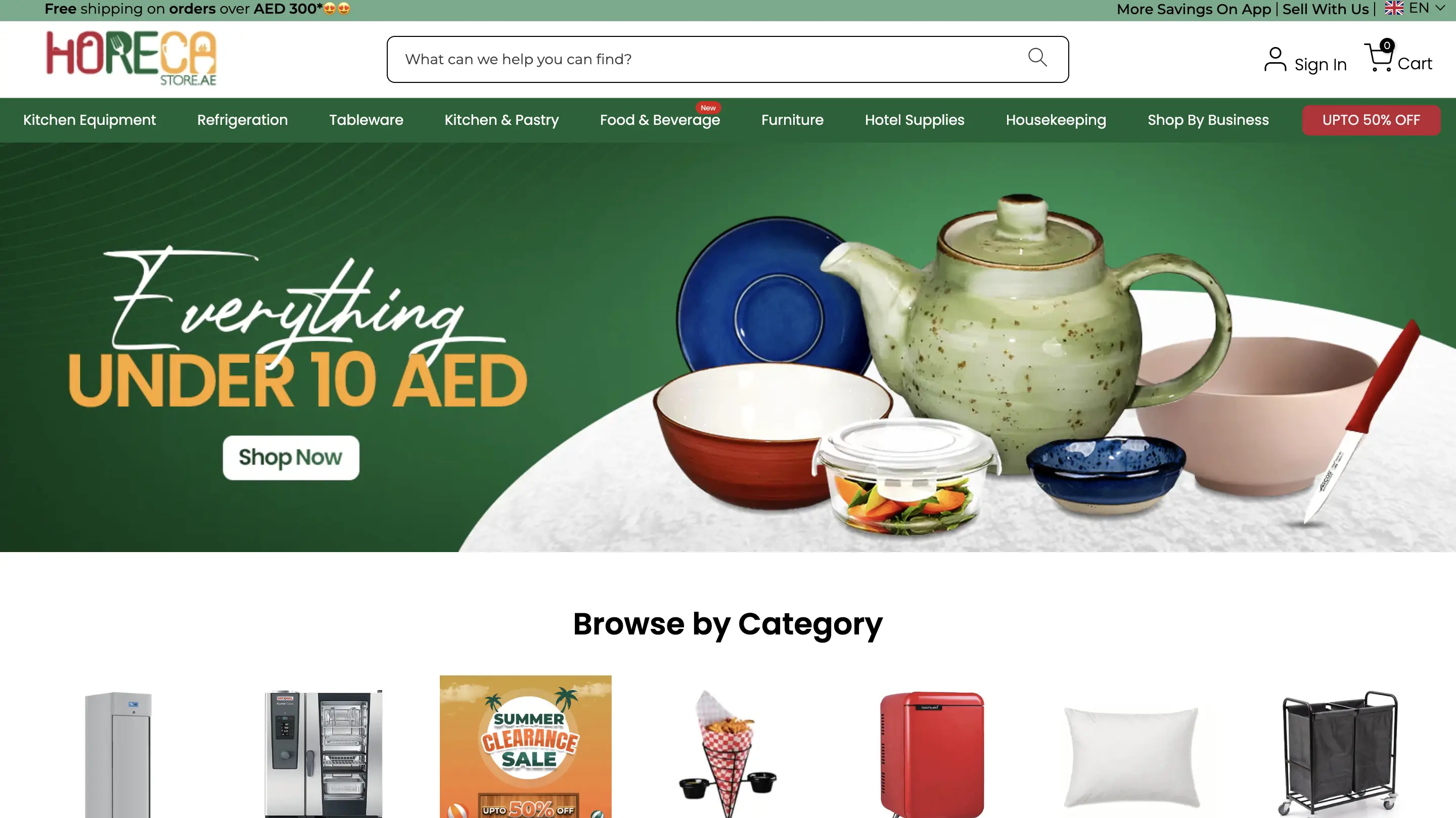
Specialized in hospitality supplies, HorecaStore supports businesses like hotels and restaurants to buy products in large quantities.
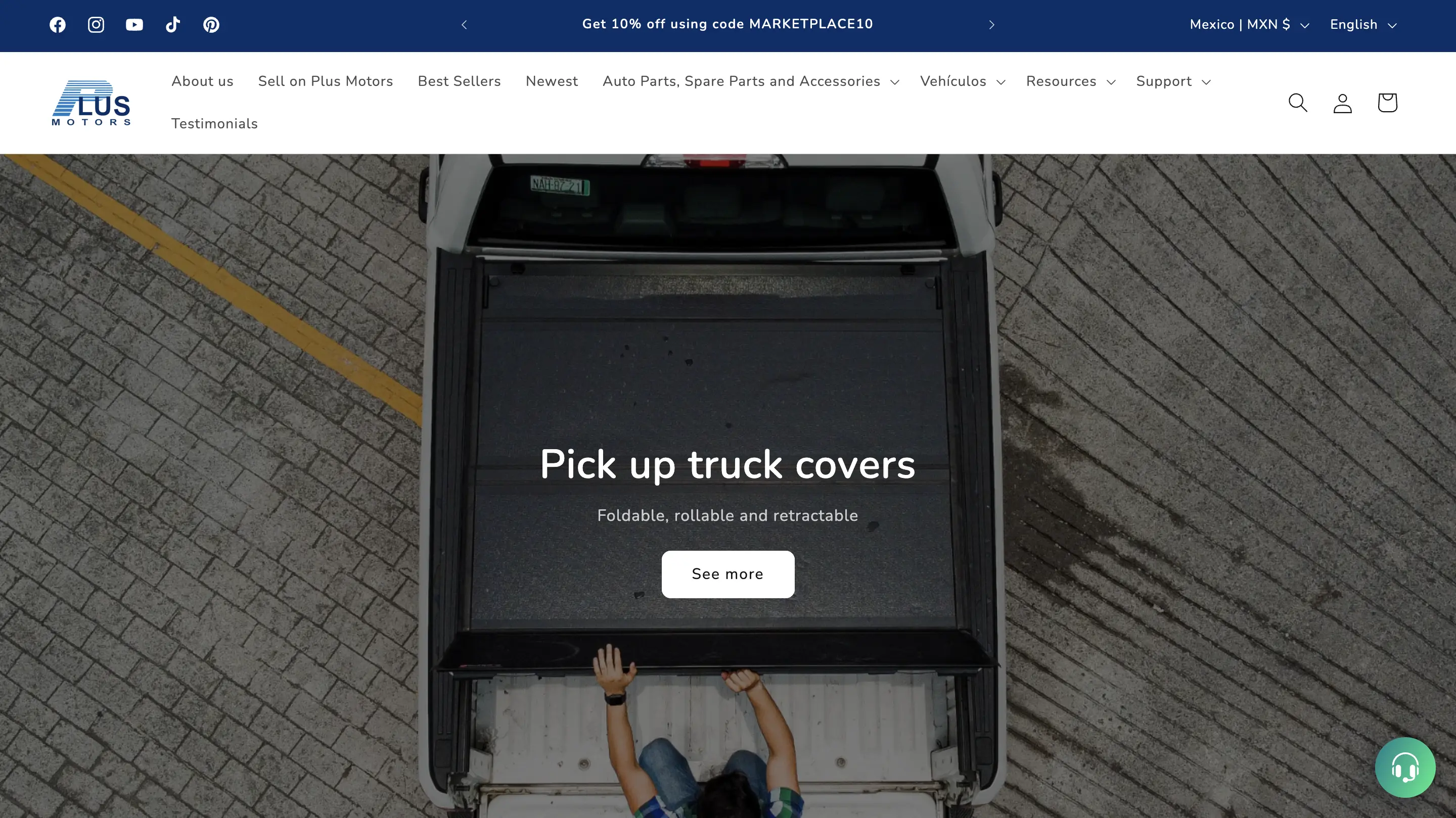
This automotive B2B ecommerce platform allows garages, dealers, and part distributors to buy car parts and accessoriesfrom a vetted supplier network.
A C2C marketplace (Consumer-to-Consumer) enables individual consumers to buy and sell from each other. This commerce model often functions through listings, bidding, and direct messaging, creating a peer-to-peer economy.
C2C (Consumer-to-Consumer) marketplaces connect individual buyers and sellers, typically in a community-driven, informal environment. These platforms thrive on scale, trust, and simplicity.
Let’s explore C2C platforms that exemplify the C2C business model. These online businesses are built over popular cart like Shopify, augmented by Shipturtle's prebuilt workflows suitable to start a C2C business:
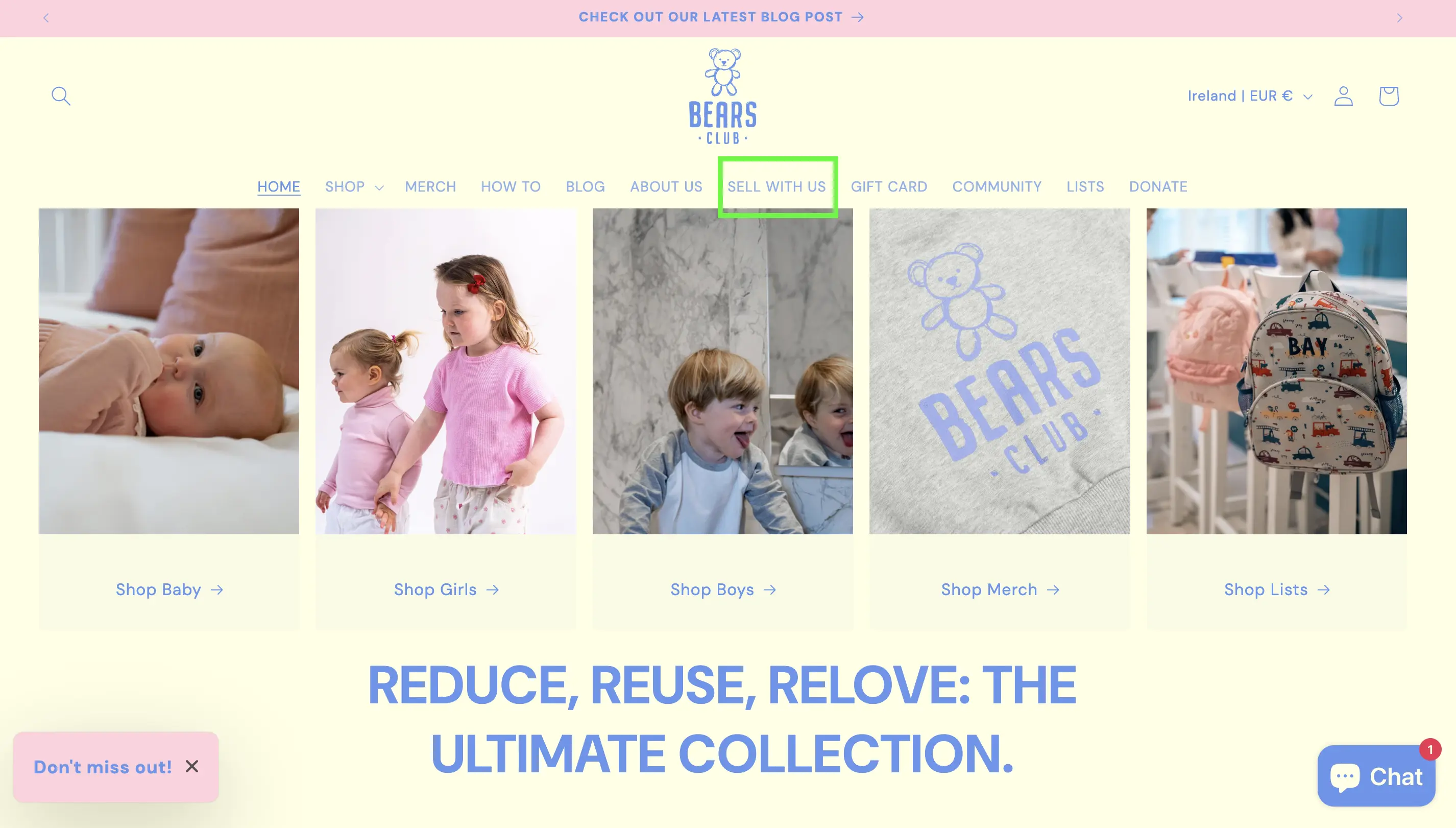
A curated kidswear and lifestyle marketplace, Bears Club connects independent sellers with parents looking for quality children’s products.
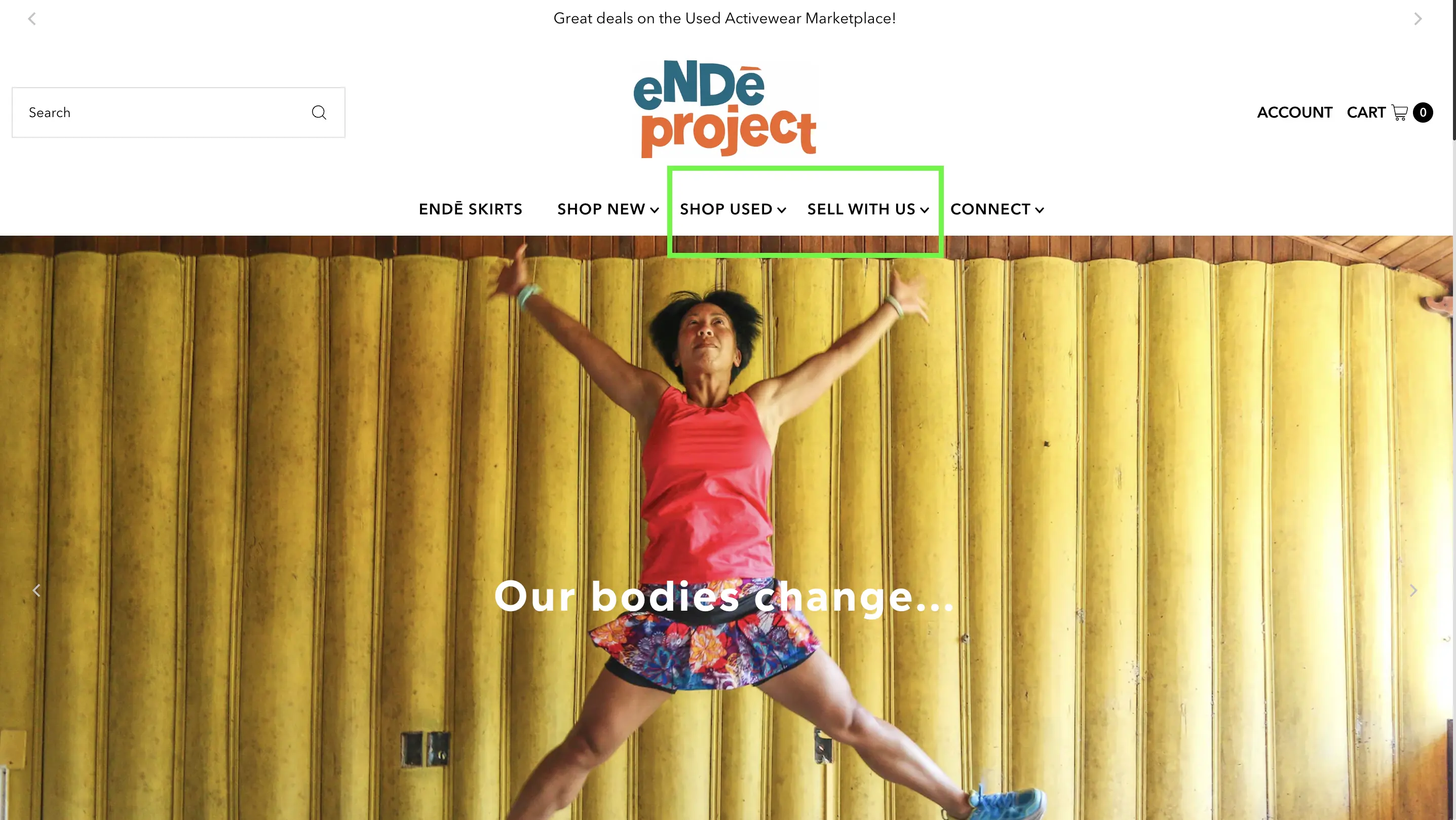
A specialized C2C platform that allows small sellers to showcase their athletic apparel and gear directly to fitness-focused communities.
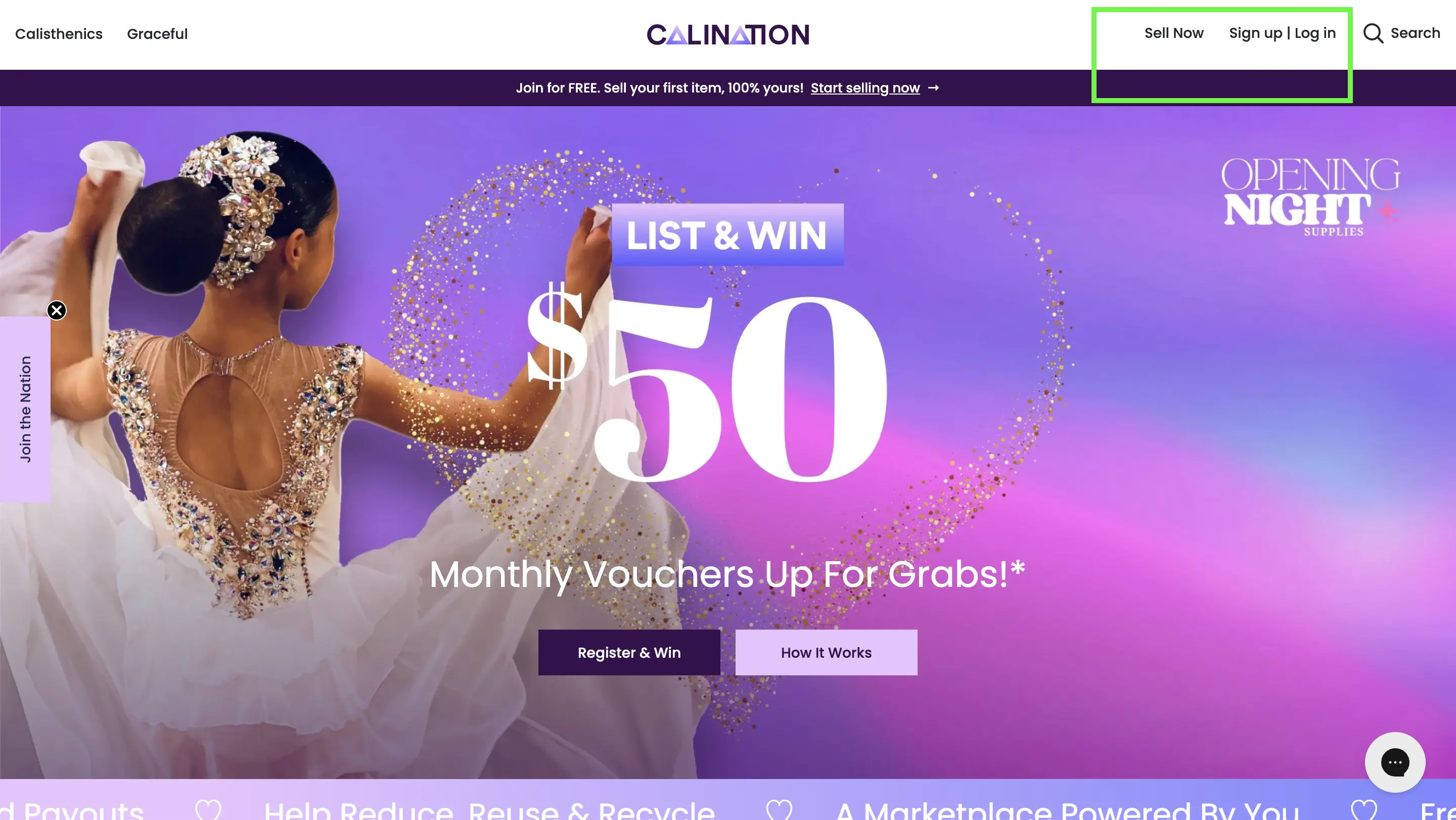
An Australian C2C marketplace that encourages local creators to sell products ranging from wellness to lifestyle in their online store.
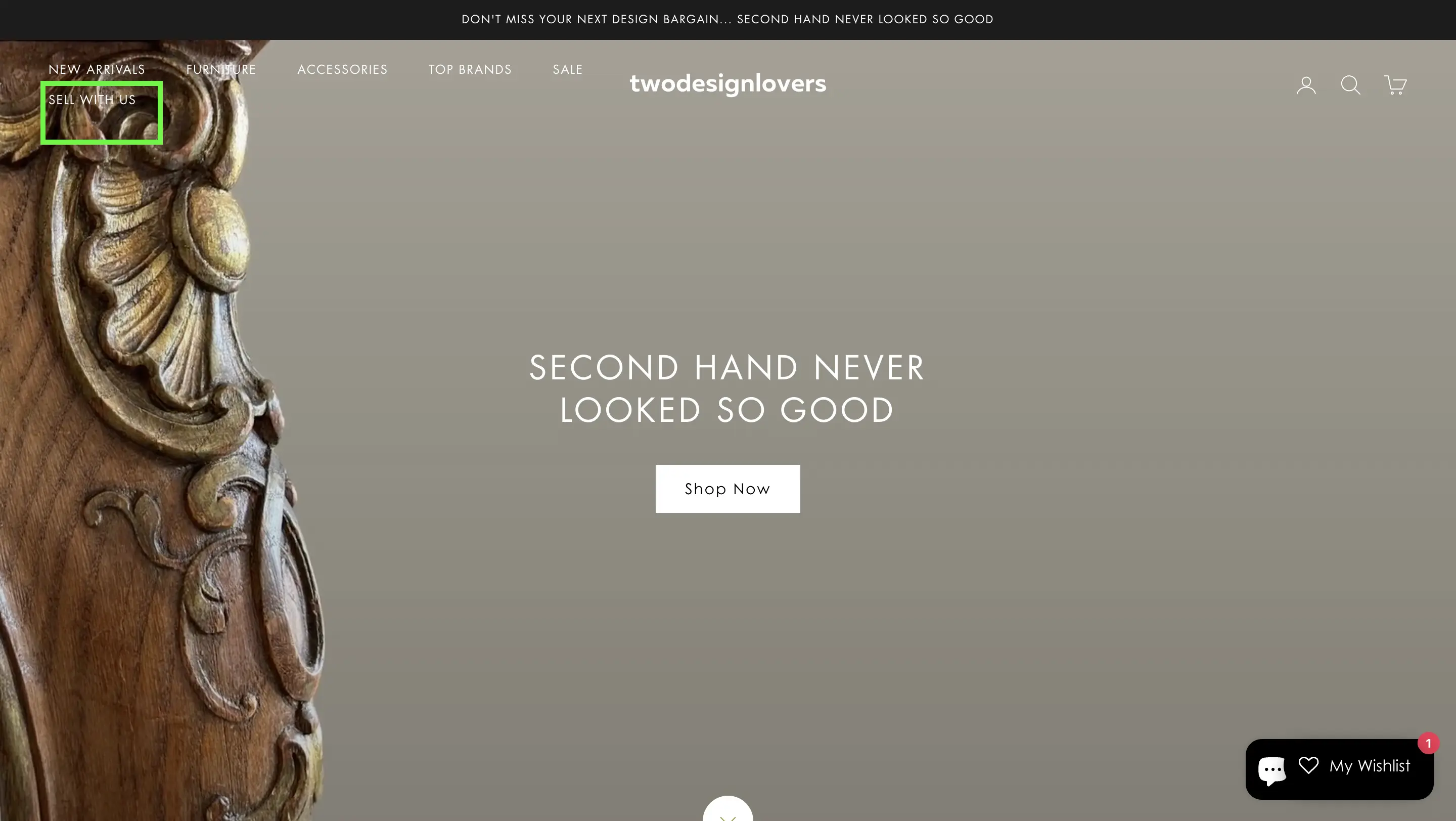
Focused on pre-owned designer furniture, this platform connects C2C buyers and sellers in the premium home decor segment.

By 2025, 30%+ of B2B sales will happen online, while C2C marketplaces are scaling 3x faster than retail—driven by resale and sustainability. Shipturtle lets you launch and grow either model with ease.
Not all ecommerce platforms fall neatly into B2B vs C2C. Many platforms operate as B2C (Business to Consumer) or D2C (Direct to Consumer):
Both B2C and D2C have transformed expectations around buying and selling—blurring the lines between formal B2B operations and peer-to-peer C2C platforms. For example, a B2B business may adopt a D2C-style interface to improve UX, while a C2C seller may transition into a B2C seller through scaling.
While B2B (business-to-business) and C2C (consumer-to-consumer) lie at opposite ends of the marketplace spectrum—one involving structured transactions between companies, the other driven by individual consumers—B2C (business-to-consumer) and D2C (direct-to-consumer) occupy the middle ground. They help us understand the wider e-commerce landscape by highlighting how businesses engage directly with end-users.
B2C e-commerce refers to companies or platforms that sell products or services directly to consumers, often through a digital online store or marketplace. Think Amazon or Flipkart—businesses that offer a wide range of products from multiple sellers directly to the public. Compared to B2B, B2C transactions are shorter in sales cycles, emotion-driven, and focus on volume rather than bulk pricing.
D2C (Direct-to-Consumer), on the other hand, is a specific type of B2C model where brands bypass retailers and sell directly to the customer through their own channels—often a branded e-commerce platform. D2C blends elements of control, personalization, and branding that are sometimes lacking in traditional B2C or marketplace models.
Your choice between B2B and C2C isn't just about who buys or sells. It defines:
Choosing the right e-commerce model depends on your target audience, product type, sales volume, and long-term business goals.
70%
Marketplace operators often struggle with vendor coordination using spreadsheets, emails, or basic plugins. Shipturtle solves this by automating workflows, streamlining operations, and offering real-time visibility for both merchants and vendors.
Whether you’re launching a business-to-business marketplace, a consumer-to-consumer ecommerce platform, or something in between like B2C or D2C, your model will influence:
And that’s where Shipturtle comes in. Whether you're building a B2B wholesale marketplace or a C2C community platform, Shipturtle helps you launch, manage, and scale your multi-vendor store effortlessly — without relying on messy Excel sheets or custom dev nightmares.
Book a free demo to see how Shipturtle powers all types of marketplaces — with automation, vendor dashboards, order routing, and more.
B2B marketplaces often yield higher lifetime value per customer and stable margins through recurring, bulk orders. C2C marketplaces can scale faster with virality and lower CAC, but monetization depends heavily on volume and engagement.
Whichever model you choose, Shipturtle helps optimize profitability through commission automation, branded order tracking, and seamless vendor sync.
Yes. Many marketplaces combine features of B2C (direct sales to consumers) or D2C (brands selling to end-users) with B2B or C2C mechanics. The key is choosing a flexible platform that adapts to your unique vendor-buyer relationship.
Shipturtle supports B2B, C2C, B2C, and D2C flows, giving you the freedom to grow and evolve your marketplace strategy over time.
Managing vendors manually using spreadsheets leads to order errors, delayed payouts, and poor customer experience. Lack of automation and visibility can break the business.
Shipturtle’s vendor management suite replaces spreadsheets with smart workflows—offering real-time tracking, auto payouts, tax-compliant invoicing, and ERP integrations.
Most off-the-shelf solutions overlook proper tax handling—especially for B2B. Accurate tax calculations and compliant invoicing are critical for audits and legal operations.
With Shipturtle’s pre-built and custom workflows, vendors can issue country-specific tax-compliant invoices, including GST in India or VAT in Europe—making it ideal for global and local marketplaces alike.



Get advanced functionalities like C2C, reverse bidding, booking & scheduling options along with advanced shipping, configurable vendor management, payment features, and more. Install Shipturtle today from the Shopify App Store and enjoy a free trial to experience its benefits firsthand.
Want to learn more about how Shipturtle can benefit your business? Book a personalized demo with our sales team.
Experience the power of Shipturtle for free. Start your trial today and discover how it can transform your Shopify multivendor store!
Start a conversation! Share this article with your network. Let them know how we can help in improving their multivendor store.
